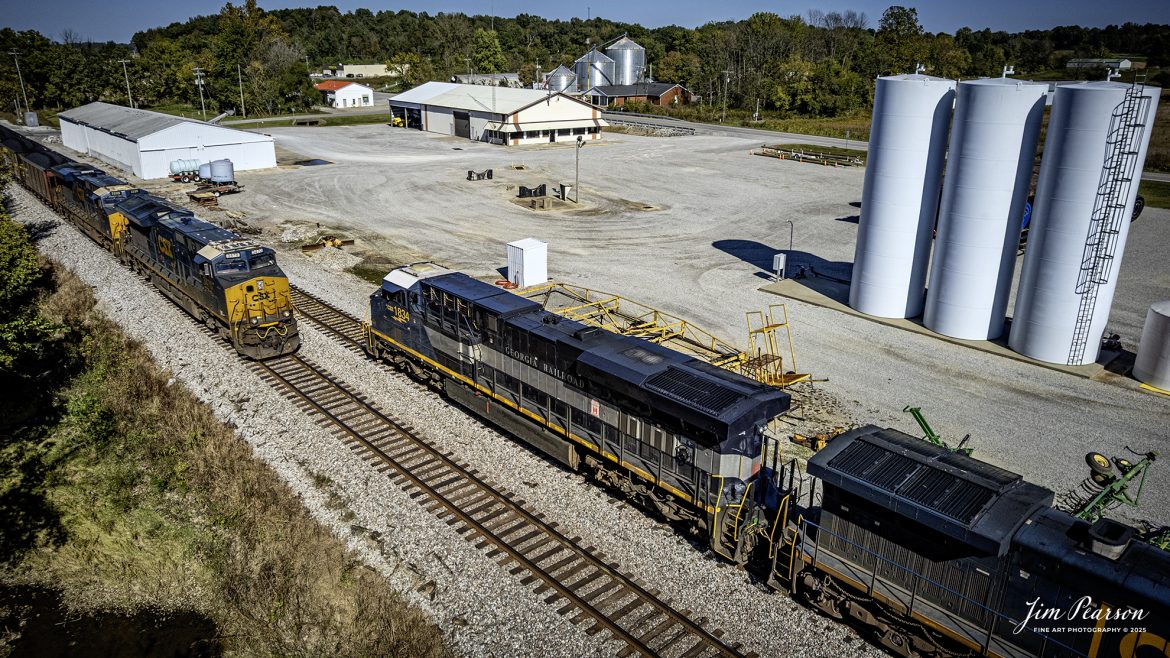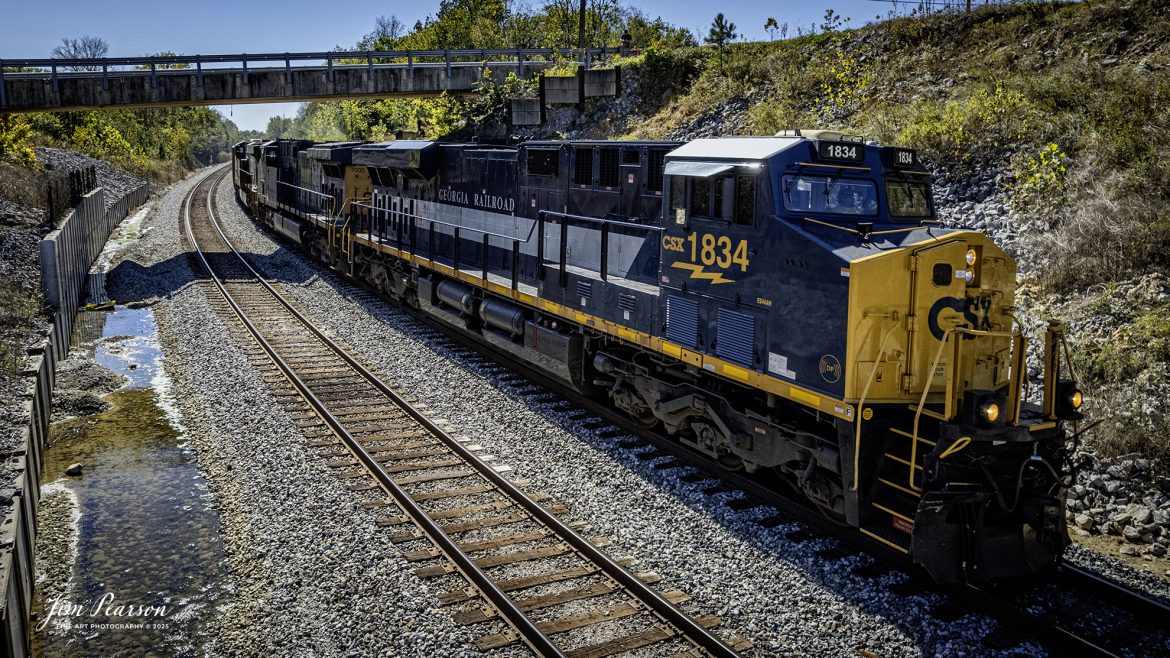CSXT 1834 Georgia Railroad Heritage Unit leads E904 as they wait on the main for southbound I195 to clear the north end of Slaughters, Kentucky, on October 14th, 2025, on the CSX Henderson Subdivision.
I thought capturing this unit had finished up my goal of capturing all the current CSX Heritage Units but looking over my records I still have yet to capture the 1902 Clinchfield locomotive and so the hunt continues!
According to a CSXT Press Release: June 27, 2024 – CSX has unveiled a new heritage locomotive honoring the legacy of the Georgia Railroad. This initiative is part of CSX’s ongoing efforts to recognize and pay tribute to the historic railroads that have played a pivotal role in shaping the American railway system.
The Georgia Railroad, also known as the Georgia Railroad and Banking Company, was chartered in 1833 and became one of the earliest and most influential railroads in the southeastern United States. Headquartered in Augusta, Georgia, the railroad was instrumental in facilitating transport and commerce across the region during the 19th and early 20th centuries.
Originally, the Georgia Railroad was established to connect Augusta with Athens, Georgia. Its route expanded over time, linking key cities such as Atlanta and Macon, thereby becoming an important artery for economic growth in the state. The railroad was renowned for its efficiency and reliability, transporting both passengers and freight.
In addition to its transportation services, the Georgia Railroad also had substantial banking operations, which further cemented its role as a vital institution in the region. Throughout its operational years, it underwent several mergers and partnerships, maintaining its prominence in the railway industry until it eventually became part of the CSX network.
CSX’s heritage locomotive series honors the historical railroads that contributed to the company’s formation. By introducing locomotives painted in the liveries of these historic lines, CSX seeks to preserve the memories and significance of these railroads while educating the public about their contributions to America’s development. The newly unveiled heritage locomotive honoring the Georgia Railroad features a striking design that incorporates the classic colors and logo reminiscent of the original Georgia Railroad branding.
Tech Info: DJI Air 2S Drone, RAW, 22mm, f/2.8, 1/800, ISO 100




















